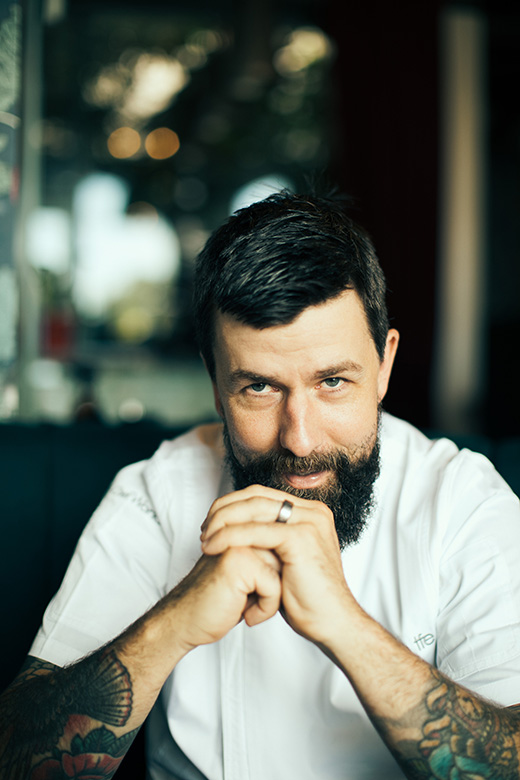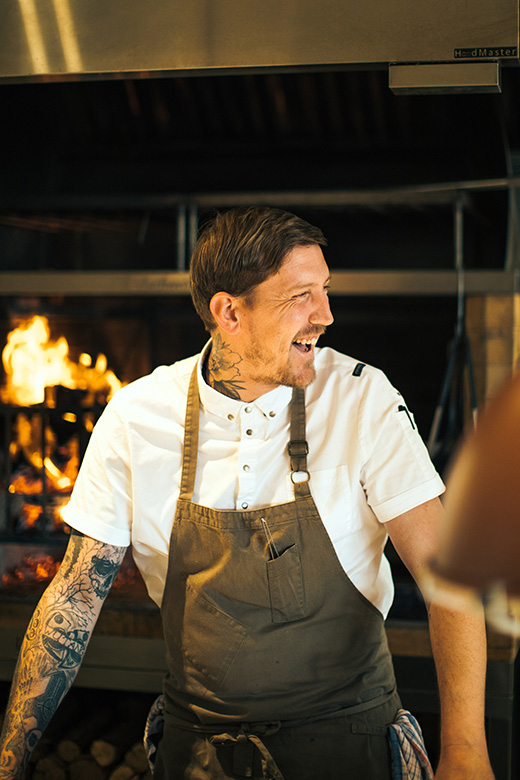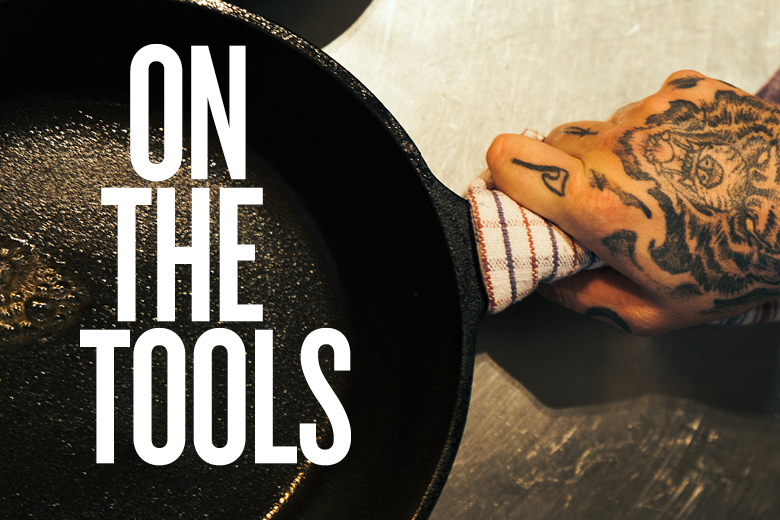Five essentials for every home kitchen
[As published in March/April BayBuzz magazine.]
Alexandra Tylee seems a little bemused as to why I want to talk to her. “I’m not really a cheffy chef,” she declares. And when gently pressed for more information on what a cheffy chef actually is, she casually but a little slyly says “Oh you know,” adding a slight conspiratorial smile.
There was a greater possibility that there’d be very similar answers to the simple questions being asked. Or maybe Alexandra, who started Pipi, was right, everyone would have some weird ‘cheffy’ gadget that cost a fortune and would only get used once.
My brief for this article – write about chefs’ favourite tools – helpfully had quotation marks around the word tools, which was all the encouragement needed to go off-piste and to ensure the five non-cheffy chefs had plenty of room to move. What about a favourite ingredient? Surely that would be just as essential as any other tool? Or music to cook by?
“Oh that’s easy,” replied Ian Thomas, who runs the catering business Paella-a-gogo. “Easy Star, All Stars. They’re a New York dubstep album covers band.” Of course they are. I had clearly drifted too far off-piste. But a simple question, naming five kitchen essentials, is trickier than it looks. Try it. The first three are pretty easy. Four and five not so much.
There was little overlap, apart from pans and knives. Casey MacDonald, at Craggy Range mentions neither, but since he talks lovingly about making carbonara and searing meat, don’t read anything into the omission.
Unsurprisingly, the most common and unforgivable crime in a kitchen is using a blunt knife. “Everything gets bruised,” says Regnar Christensen. There’s almost a hint of despair as the Black Barn executive chef describes unspeakable acts of blunt force trauma.

Sam Clark, who founded the Central Fire Station, gets quite excited describing the laser cut precision steel of Victorinox, literally the Swiss army knife of kitchen knives. It’s clearly a subject close to Sam’s heart, and as he hits his straps, he moves on to discuss knife graveyards and the merits of famed Japanese steel blades. They’re harder due to the higher carbon content of the steel, which keeps the blade sharper longer – just in case anyone asks.
Alexandra by comparison, loves the old, heavy, but perfectly balanced knife that she found in an antique shop in the Sydney suburb of Woollahra. Remarkably, Alexandra says, it’s never needed sharpening.
A decent pan is clearly the most prized tool. A heavy cast iron pan by Lodge gets a couple of mentions in dispatches. “It holds the heat and distributes it evenly,” explains Regnar. He uses it to do anything from searing meat to cooking tortillas, while Sam says they’re the best for caramelising.
Ian, who has mastered one-pan meals at scale, goes slightly off the track with, shock horror, an electric pan. He got his to make banana pancakes. In the non-electric category, he seems a little torn between cast iron, and stainless steel, which gets hotter, but loses heat faster. “Anything that’s non non-stick is good to go,” says Ian.
Victorinox knives and Lodge pans aside, the rest of the essential tools are simple. They are as accessible as they are varied.

Alexandra has recently sold her famous Pipi, swapping oil for acrylic and another canvas altogether. Her menu favoured the classics, like the meatballs that were a restaurant mainstay for nearly two decades; a result of two or three or more weeks of intense research, and many gentle tweaks over time. Memories and food are inexplicably linked for Alexandra. The famous Pipi flounder reminds her of grandad, the apple crumble takes her back to the farm. She wants us all to come with her on the journey. “I just wanted to make people feel great” is how she describes her time at the restaurant.
“Turmeric,” Alexandra announces quite emphatically, ticking another essential off the list. “So good for sleep.” She puzzles a little when asked what she adds the magical spice to. There is apparently only one correct answer – everything! But most often in muffins, stir fries, curries and a drink called ‘golden milk’, with ginger and honey.
Alexandra chooses a steamer to add to her list. “Oh, and a Vitamix,” she says. We’re talking about a weapons grade blender that will make quick work of raw vegetables and nuts. “Not everyone can eat raw vegetables,” she says.
Exactly, and not everyone wants to. ‘Salad isn’t food,’ as the meat lovers mantra goes, ‘it’s what food eats.’
Alexandra has gone plant-based, so another of her essential tools is nutritional yeast. “It makes things taste like cheese,” she says. Although another valid argument might be that cheese is the only thing that needs to taste like cheese.
The talk turns serious, to one of the most popular food groups; spaghetti bolognese.
Nutritional yeast also makes a Vegan bolognese taste meaty says Alexandra. If you ask me, the whole meatless idea is a concept that is just asking to be made fun of: if you didn’t like meat, why would you want to eat something that tasted like it?
Thankfully, at the Central Fire Station, we’re back on meatier ground. Sam does his bolognese in a pressure cooker. “It seals in the flavour,” by way of explaining what makes the cooker special. He also confirms that we’re talking meat-based bolognese, just to make sure we’re on the same page of the cookbook. We are. The pressure cooker is something he can’t live without.
With a young family, he’s on the tools at home too, using it almost every second meal. “I can leave the restaurant, go home, brown the meat, throw everything else in, take the kids for a walk on the beach, and 30 minutes later we’re eating,” says Sam.
The pressure cooker is a bit of a wildcard, but there’s not a hint of any cheffy chef vibes from Sam who got the cooker from Briscoes. By and large though Sam’s not a huge fan of kitchen gadgets, declaring most of them nonsense.
He’s adamant that a heavy wooden chopping board should be in every kitchen. Anticipating the next question regarding food safety, Sam dismisses the idea that a wooden board is a breeding ground for germs, a good wash keeps it hygienic. “Plastic boards tend to slip all over the place,” he says. Yes, and they’re plastic.
Sam completes his list with salt and lemon, mentioning a famous Auckland chef who would take a lemon in his pocket whenever he ate out, using the acid in the lemon to balance out any rich food he might encounter. That’s definitely a bit cheffy like, but Sam explains it away quite logically. Our palates, apparently, get bored when we eat too much of the same thing, so yeah, salt and lemon keeps the dullest palate on its toes presumably.

It’s Casey MacDonald over at Craggy Range, who introduces the ultimate palate boredom buster. A tin of Vegeta, a vegetable stock powder that you get at the supermarket and is an essential at home. “Go on,” says Casey offering the tin. It tastes like the crumbs from the bottom of a bag of chicken chips. Heaven in other words. “Sprinkle it over rice, chicken, pretty much anything,’ he says enthusiastically. You’re welcome.
Sharp scissors or shears are another must-have. “They need to be sharp enough to cut a chicken carcass and through fish bones,” says Casey adding that they get used at home to cut cooked pizza and the kids cut marshmallows with them.
Casey’s most essential tool is a Microplane. He’s clear on that. It’s a small stick like grater, apparently invented by a woman who – married to a carpenter – took inspiration, you’d assume, from a filing tool in his workshop. “It’s great for getting the burnt bit off the toast,” Casey says helpfully, although Casey isn’t the type you’d imagine would burn much toast.
Easier to imagine is Casey using it to grate parmesan, which segues neatly into him reciting the perfect Carbonara recipe. Casey’s secret is a yolk and a half per person and an equal amount of olive oil.
Casey’s final choice is a toss-up – see, told you it wasn’t easy – between a meat thermometer and an egg slicer, because as he quite rightly says; “Who can slice an egg? It’s impossible.”
If anyone could slice an egg, then odds on it’s Ian. Before he started Paella-a-gogo, and his newest venture, a mobile Mac & Cheese cart – Mac Daddy – Ian was a free-range egg farmer, then he became an egg ambassador of sorts, teaching cooking in schools and at shows. “Eggs,” Ian says, “don’t need to be cooked in boiling water, just below.” Sixty degrees is all that’s needed for the egg white to set.
Ian’s a bit dubious that there are in fact five essential tools in the kitchen, but for the man with a pan, a firm favourite is his trusty spice grinder. Cooking outdoors and on display as Ian often does comes with its own challenges. “Nothing’s the same twice,” Ian tells me. An early lesson learned was always heat the spices in the pan before adding anything else to release flavours and aroma. “By the time it’s ready, you’ve already sold it.”

One pan cooking isn’t something you would expect to discuss with a chef like Regnar. Black Barn has a hyper local philosophy, getting what they can as close to the kitchen as possible. But with four kids at home, hyper easy has a critical role to play in Regnar’s life too. His glowing recommendation of Jamie Oliver’s 10-minute meals comes with the appreciative praise of any young working parent.
He raves about another essential ‘tool’ – Hands Down tortillas that are made locally down the road in Napier. They’re made on a Tuesday … because that’s what they say. And while it’s a certainty that’s strangely comforting to know, it’s a struggle to quickly think of a use for tortillas apart from, well, tortillas. Regnar suggests using them in a Korean stir fry.
He sticks closely to the Korean theme, listing Gochujang Chilli paste, sesame oil and Healthy Boy thin soy sauce to round out his list. He prefers the distinctive nutty flavour of the sesame oil, and Regnar is a certified heavy user of Healthy Boy, going through a bottle every couple of weeks, which in anyone’s book would qualify as being very essential indeed.
What’s becoming obvious about all the choices is how simple they are. Uncomplicated and unplugged. All of the must-haves and go-tos neatly reflect the food philosophy that everyone seems to share and hold dear. Less is more.
There’s huge respect for fresh, quality ingredients and the people that grow them, which is probably why they count very much as essential tools.
There’s a generosity too; cooking tips are more than forthcoming – from turning meat over while resting it, to get a more even result; to cooking beans just past al dente to make them more beany; and adding vinegar to roast veggies to brighten them up.
And no, they won’t taste like vinegar, Casey assures me.
Everyone stresses the need not to go overboard. “Put the effort in,” explains Regnar “but don’t over complicate the plating or the flavours.”
Alexandra agrees, but also firmly believes mood is important. We shouldn’t be grumpy around food. She catches herself, wondering if she sounds a bit new age-y.
Maybe a little.
But she doesn’t sound ‘cheffy cheffy’ in the slightest.

